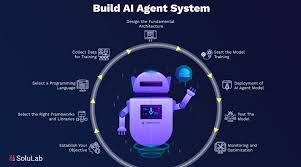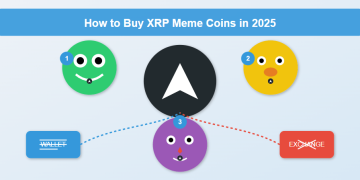How to Build an Autonomous AI Agent for Your Business
As artificial intelligence continues to transform the business landscape, organizations of all sizes are eager to harness the power of autonomous AI agents. These intelligent systems can automate complex tasks, make data-driven decisions, and drive operational efficiencies that boost profitability and customer satisfaction. But building an autonomous AI agent for your business is a sophisticated process—one that requires strategic planning, the right technology, and ongoing management.
In this comprehensive guide, we’ll walk you through each step of building your own AI agent: from shaping its purpose to deploying and maintaining it for long-term success. Whether you’re exploring AI for the first time or aiming to scale up your current automations, this roadmap delivers actionable insights designed to set you apart from your competition.
1. Define Your AI Agent’s Purpose and Scope
Before diving into technical development, it’s essential to lay a strong strategic foundation for your AI initiative.
Identify the Business Problem
Every successful AI project starts with a clearly defined business challenge. Are you looking to automate customer service tasks, streamline supply chain operations, or increase sales through personalized recommendations? The more specific your use case, the better your chance of building an impactful solution.
Set Measurable Objectives
Use Key Performance Indicators (KPIs) to quantify the agent’s potential benefits. Examples might include reducing customer response time by 30%, increasing order fulfillment speed, or lowering operational costs. Clear KPIs help you gauge success after deployment and motivate your team.
Determine the Agent’s Scope
Defining boundaries early on prevents scope creep and technical overreach. Decide:
- What data sources the AI agent will access (CRM systems, emails, social platforms, etc.)
- What actions it can take (triggering emails, updating records, placing orders)
- Integration points with existing infrastructure
Focusing on scope ensures your project remains lean and delivers ROI quickly.
2. Choose the Right Technology Stack
Successful AI agents are built upon a robust, scalable, and secure technology foundation. The right choices here lay the groundwork for success.
Programming Language
Python dominates the world of AI thanks to its simplicity and ecosystem of powerful libraries. Its open-source nature, community support, and flexibility make it a go-to choice for most AI projects.
Machine Learning Frameworks
Popular frameworks like TensorFlow and PyTorch enable rapid prototyping and deployment of machine learning models. Both offer extensive tools for neural networks, natural language processing (NLP), and reinforcement learning.
Cloud Platforms
Scalability is key for real-world AI applications. Leading enterprise AI platforms like Stack AI provide infrastructure, security, and access to specialized AI services—removing operational headaches and enabling rapid scaling as your business grows.
APIs and Integrations
Today’s AI agents are rarely standalone—they must interact with internal databases, third-party services, and APIs (such as for speech-to-text, sentiment analysis, or business process management). Select APIs and SDKs early in your planning to streamline development.
3. Architect Your Autonomous AI Agent
Designing the AI agent’s architecture is critical for ensuring it performs its intended functions accurately and reliably.
Perception
How will your agent “sense” its environment? Define and integrate necessary data sources, sensors, or communication endpoints. Include robust data preprocessing steps to ensure quality, consistency, and reliability.
Decision-Making
Determine how the agent makes choices—does it use rule-based logic, advanced machine learning models, or a hybrid approach? For dynamic decision-making, reinforcement learning allows agents to learn optimal strategies through trial and error, which is ideal for complex, evolving environments.
Action
Clearly articulate what the agent is empowered to do. Define both its digital and real-world actions—whether it’s approving invoices, responding to customer inquiries, or dispatching delivery trucks. Build secure interfaces so actions are traceable and reversible if necessary.
Learning and Adaptation
For your AI agent to remain valuable, it must continuously improve. Incorporate mechanisms for ongoing learning—such as periodic retraining on new data, supervised fine-tuning, or automated feedback loops that correct mistakes and optimize performance.
4. Develop and Train the AI Agent
With the groundwork laid, it’s time for hands-on development.
Data Collection and Preparation
Data quality is paramount. Gather representative, unbiased, and well-labeled training data that reflects the real challenges your agent will face. Scrub it for inaccuracies, normalize formats, and ensure privacy compliance.
Model Building and Training
Leverage tools from your technology stack to train the agent. Test various algorithms and tweak parameters for optimal accuracy, efficiency, and generalization. Document each experiment to track progress and justify decisions.
Testing and Validation
Before releasing your agent into the wild, validate its performance in controlled environments that simulate real-world scenarios. Test edge cases, measure efficiency, and ensure robustness against unexpected inputs. KPIs defined earlier come in handy here.
For a deeper dive into how these agents work and the variety of applications they can tackle, visit What is an AI agent.
5. Deploy, Monitor, and Continuously Improve
Deployment is a major milestone, but it’s not the end of the journey.
Deployment
Roll out your agent carefully, whether as a standalone application or through integration into existing business systems. Cloud platforms often offer powerful deployment pipelines, version control, and redundancy for mission-critical operations.
Monitoring and Analytics
Track the agent’s performance in real time using dashboards and logs. Set up alerts for anomalies or failures. Collect actionable feedback—both from system logs and end users—to identify opportunities for further improvement.
Maintenance and Updates
Autonomous agents require ongoing care. Regularly retrain models on new data, patch vulnerabilities, and upgrade software dependencies. Schedule periodic reviews of agent actions and decision logs to ensure continued compliance and effectiveness.
6. Key Considerations for Business AI Agents
While technical execution is critical, long-term success depends on navigating broader enterprise priorities.
Security
Protect your AI agent (and its data) from unauthorized access and cyber threats. Apply strong authentication, encryption, and audit trails.
Ethical AI
Accountability and transparency are essential to building trust. Ensure your agent is fair, explainable, and auditable. Regularly evaluate outputs for bias or unintended consequences.
Explainability
Provide clear documentation and interface tools that help stakeholders understand how the AI agent arrives at decisions. This not only aids troubleshooting but also builds business confidence in AI-powered automation.
Scalability and Cost
Design for growth. As your business evolves, your AI agent should scale seamlessly—handling increased data volumes, more complex tasks, or broader responsibilities without bottlenecks. Always weigh the development and ongoing costs against expected ROI.
For organizations seeking ready-to-deploy, tried-and-tested solutions, explore enterprise AI agent selections that fit your industry and business needs.
Unlock a Smarter and More Efficient Future
Building an autonomous AI agent isn’t just about adopting new technology—it’s about transforming your business. Executed thoughtfully, your AI agent will work around the clock, making smart decisions, automating routine work, and freeing your human talent for higher-value innovation.
With the steps above, you’ll lay the groundwork for sustainable automation: starting with strategic clarity, leveraging the most effective technology stack, designing resilient architectures, and embedding robust security and governance at every stage. Now is the time to start your journey to a smarter, more agile, and forward-thinking business.
Frequently Asked Questions (FAQ)
1. What is an AI agent in the context of business operations?
An AI agent is a software entity that can autonomously perform specific business tasks, make decisions based on data, and learn from interactions to continuously improve performance.
2. How is an AI agent different from a chatbot or workflow automation tool?
Unlike simple chatbots or automation scripts, AI agents leverage machine learning and sophisticated algorithms to make context-aware decisions and adapt over time.
3. What industries benefit most from autonomous AI agents?
Virtually every industry—retail, healthcare, finance, logistics, and customer service—can benefit from the efficiency and adaptability of autonomous AI agents.
4. How secure are autonomous AI agents?
Security is paramount. Best practices include encryption, regular vulnerability assessments, strong authentication, and audit trails to prevent unauthorized access or manipulation.
5. How do I measure the ROI of deploying an AI agent?
Define KPIs aligned with your primary objectives, such as cost savings, time reduction, accuracy improvements, or customer satisfaction. Regularly track and analyze these metrics post-deployment.
6. How often should I retrain my AI agent’s models?
Retraining schedules vary by use case and data dynamics, but it’s advisable to retrain models whenever significant changes in data patterns are detected or at least quarterly.
7. Can I integrate my AI agent with existing business systems?
Yes, leading platforms and APIs facilitate seamless integration with CRMs, ERPs, and other enterprise systems to maximize workflow efficiency.
8. What’s the best programming language to use for building AI agents?
Python is the most popular due to its simplicity and robust AI/ML library ecosystem.
9. How do I ensure that my AI agent makes ethical and explainable decisions?
Build transparency into your workflows, use explainable AI techniques, conduct regular audits for bias, and document decision-making processes thoroughly.
10. Where can I learn more about launching enterprise-scale AI agents?
Check out specialized resources and solutions such as Stack AI’s enterprise AI platform for best-in-class tools, guides, and expert support.
Ready to bring your vision of business automation to life? Armed with this guide, you’re well-positioned to launch, monitor, and scale an autonomous AI agent that will redefine what’s possible for your organization. Start building your advantage today!










